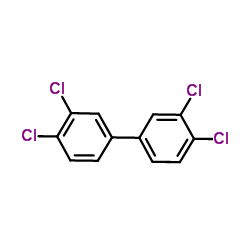Increased proliferative effect of organochlorine compounds on human preadipocytes.
Natalie A Chapados, Claudia Casimiro, Michael A Robidoux, François Haman, Malek Batal, Jules M Blais, Pascal Imbeault
Index: Mol. Cell Biochem. 365(1-2) , 275-8, (2012)
Full Text: HTML
Abstract
Chlorinated persistent organic pollutants, commonly referred to as organochlorine compounds (OCs), are chemicals of environmental concern that were mostly used historically as pesticides, solvents, flame retardants, and other applications, though some still continue to be produced. OCs accumulate in adipose tissue because of their hydrophobicity. Evidence suggests that OCs modulate adipose tissue metabolism and could affect its development. At the cellular level, the development of adipose tissue is partly controlled by replication of preadipocytes, which may in turn be modulated by contaminants. The aim of this study was to determine whether exposure to specific OCs and to different concentrations, some mimecting those achieved in human tissues that are exposed to chemicals from the environment, affects human preadipocyte proliferation capacity. Human preadipocytes were exposed to various concentrations (3-500 μM) of highly prevalent OCs (PCBs 77, 153 and DDE) for 48 h. At the end of the exposure period, quantification of cell density was assessed by a cell proliferation ELISA assay. Preadipocyte proliferation significantly increased (~28-72%) in response to most of the concentrations of PCB 153 and DDE as compared to the control. These findings suggest that exposure to some OCs and concentrations increase the proliferative capacity of human preadipocytes.
Related Compounds
| Structure | Name/CAS No. | Molecular Formula | Articles |
|---|---|---|---|
 |
3,3',4,4'-Tetrachlorobiphenyl
CAS:32598-13-3 |
C12H6Cl4 |
|
Polychlorinated biphenyl 77 augments angiotensin II-induced ...
2011-11-15 [Toxicol. Appl. Pharmacol. 257(1) , 148-54, (2011)] |
|
Biotransformation of 2,2',5,5'-tetrachlorobiphenyl (PCB 52) ...
2011-05-16 [Chem. Res. Toxicol. 24(5) , 718-25, (2011)] |
|
Differential sensitivity of CYP1A to 3,3',4',4-tetrachlorobi...
1998-05-01 [Comp. Biochem. Physiol. C. Toxicol. Pharmacol. 152(1) , 42-50, (2010)] |
|
Lack of CYP1A responsiveness in species inhabiting chronical...
2013-03-01 [Comp. Biochem. Physiol. C. Toxicol. Pharmacol. 157(2) , 212-9, (2013)] |
|
Identification and mRNA expression of pi-class glutathione S...
2012-03-01 [Comp. Biochem. Physiol. C. Toxicol. Pharmacol. 155(2) , 300-6, (2012)] |